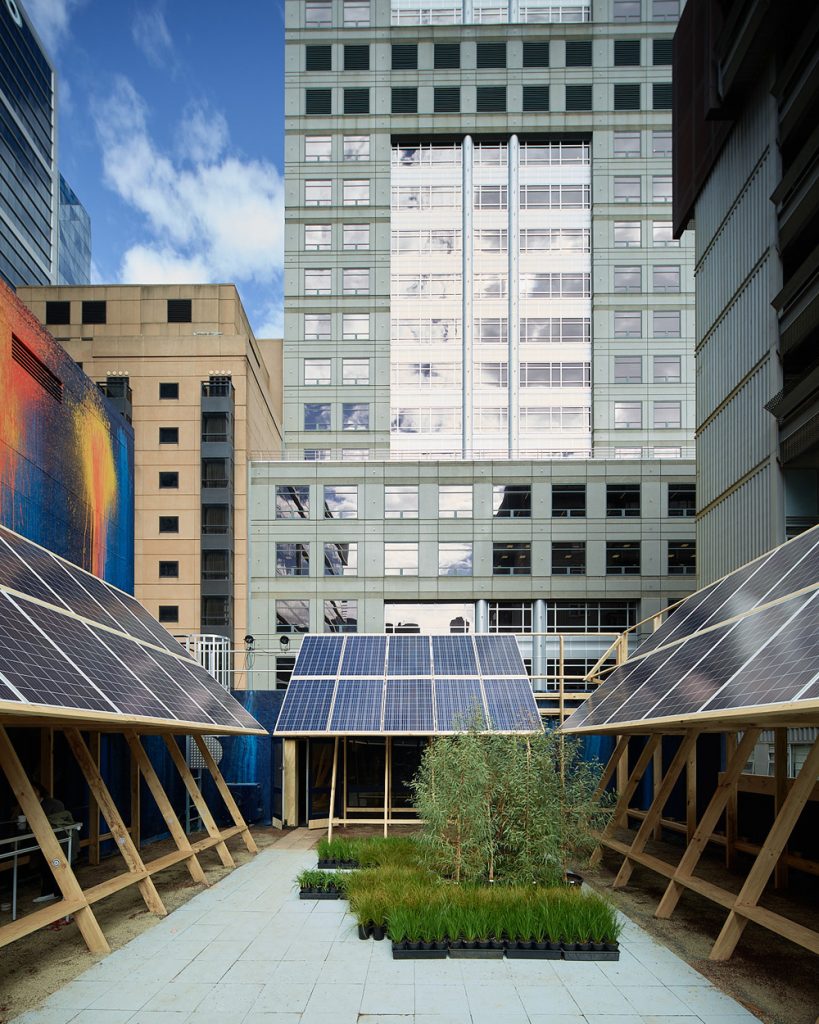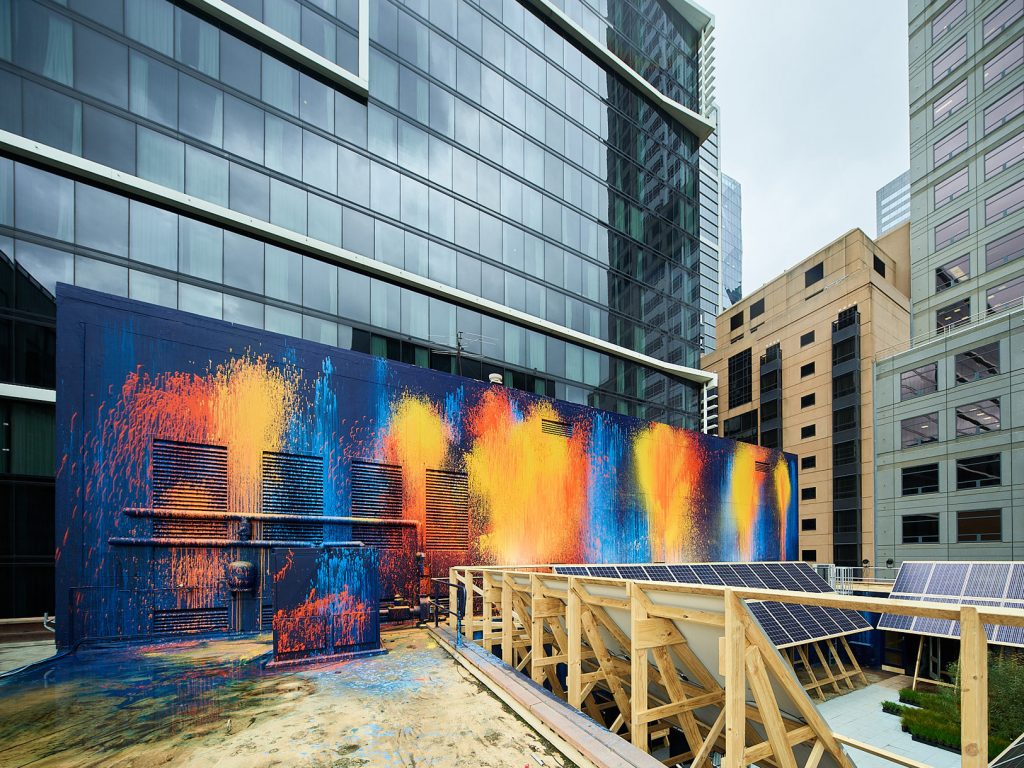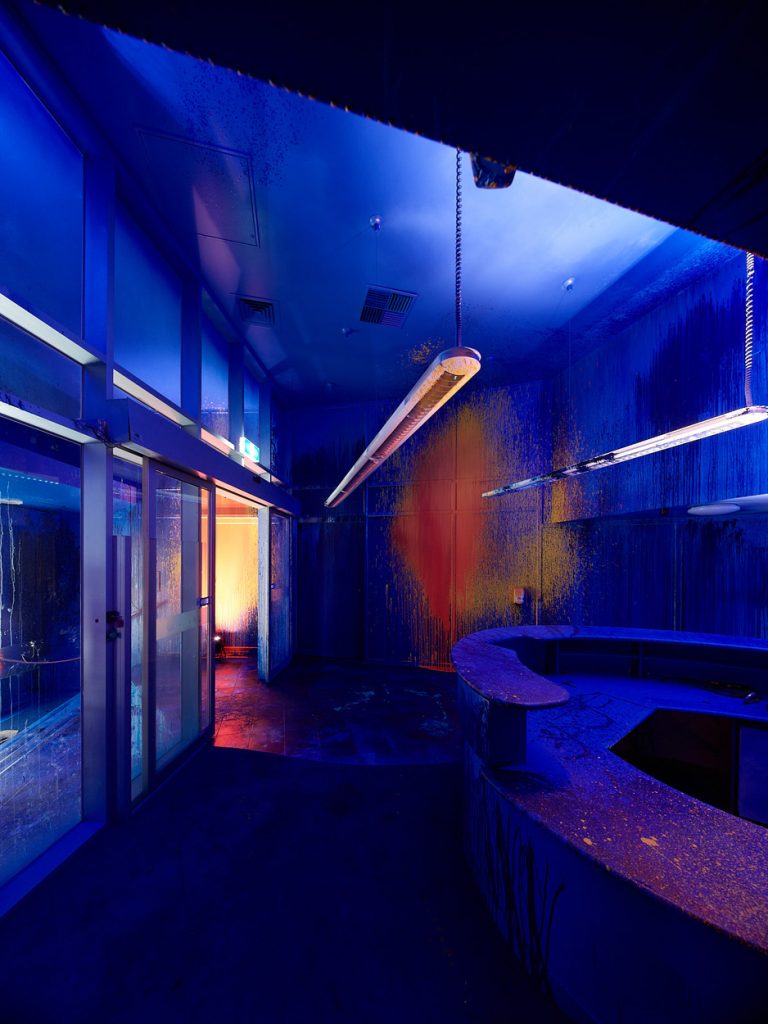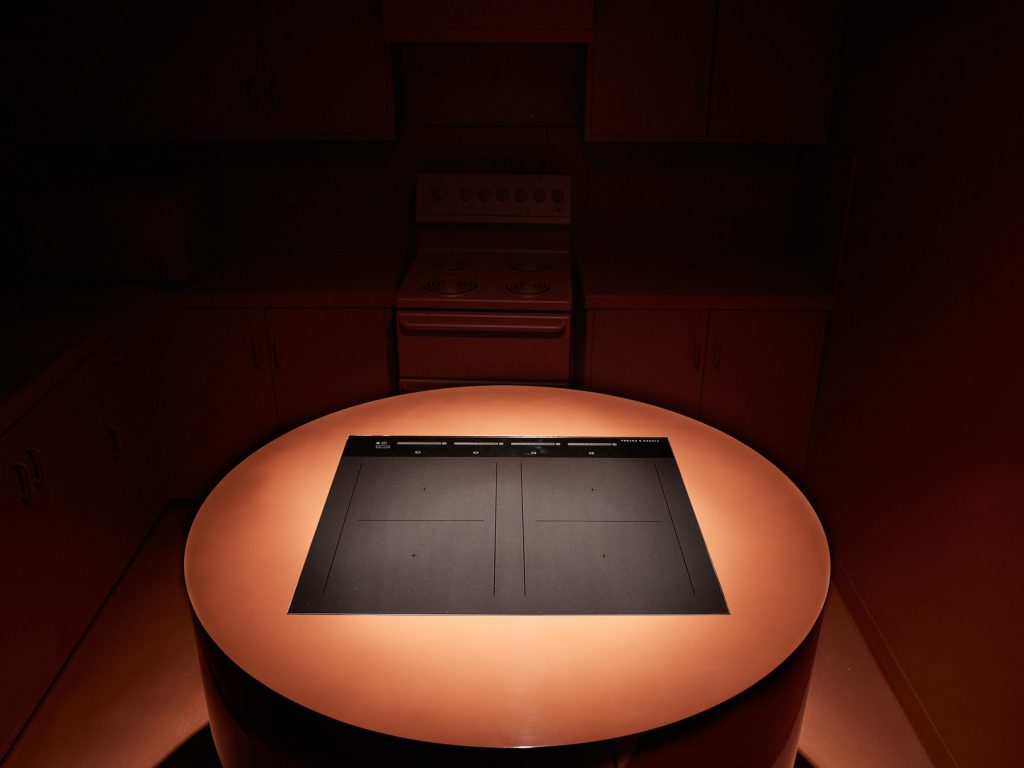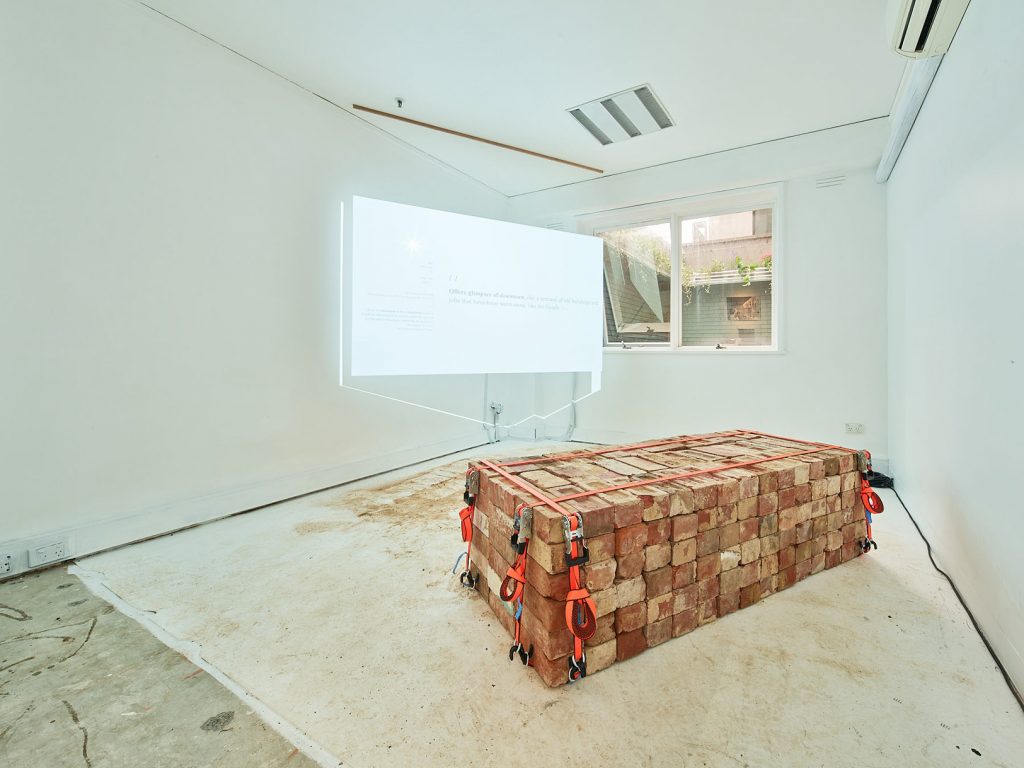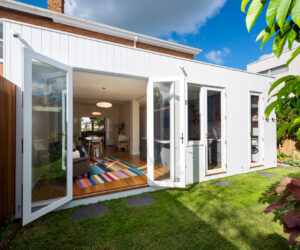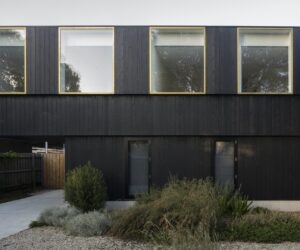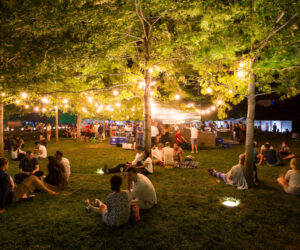Can Melbourne become an entirely self-sufficient city?
The rooftop of Golden Age Group’s 130 Little Collins Street has been transformed into a series of site specific installations and performances by 15 of Melbourne’s most renowned architects and designers, as they, alongside Ross Harding’s Finding Infinity seek to turn Greater Melbourne from a consumer to a producer by 2030.
Forming part of Melbourne Design Week as an independent exhibition, A New Normal challenges Melbourne to become an entirely self-sufficient city, a fitting analogy to coincide with the Design Week 2021 theme of design the world that you want.
From a live demonstration of electrifying a vehicle to showcase the potential for converting all transport infrastructure to electric; through to an installation exploring the possibility of energy efficiency retrofits of buildings across greater Melbourne, A New Normal encourages Melbourne’s creative community to come together to consider, interrogate and celebrate a raft of emerging sustainable technologies.
Acting as the canvas for the installations is Golden Age Group’s 130 Little Collins Street building; purchased in 2019 from the Uniting Church where it served as the Uniting Church’s Victorian and Tasmanian headquarters for the last 52 years since the building was built in 1967.
A brown brick building as it stands today, the building is set for demolition to make way for a 27-level high state-of-the-art boutique commercial office that is set to redefine the traditional office space by creating an unprecedented vertical community with a strong emphasis on sustainability, technology, health and well-being.
While 130 Little Collins will be a building of high environmentally sustainable design with certification targets of 5-Star NABERS design potential, 5-Star Green Star Design and As-Built, in addition to WELL Certification as a means of improving the health and wellbeing of its occupants, Golden Age Managing Director Jeff Xu agrees more can be done by developers.
“Although these practices are not as ambitious as what A New Normal is proposing for Greater Melbourne, they are an important first step and one many developers are yet to take.”
“Initiatives such as WELL Certification were unheard of a few years ago but today, is becoming more commonplace – this is a result of more honest conversations, asking ourselves what can we do better for the environment as well as the inhabitants of each project.”
“The transition to a greener future will be one that will take place over a number of years but Golden Age is committed, alongside the architects involved in this program, to rethink our approach to future projects because at the end of the day, every small step in the right direction counts.”
“The collective vision all these architects have on the future of sustainability is incredibly inspiring and is a must for those involved in the broader industry to be exposed to. The installations will no doubt get the industry thinking (and talking) and we are pleased to be able to provide the blank canvas for the program to become a reality,” he said.
The exhibition will run from March 26 to April 3. Those partaking in the exhibition include:
- The City After Oil presented by Grimshaw with Greenaway Architects and Greenshoot Consulting incorporating a live demonstration of electrifying a vehicle to showcase the potential for converting all transport infrastructure to electric.
- Net Zero Architecture presented by Kennedy Nolan speculates on net zero architecture and the existing technologies that can make this happen
- Wasted Waste presented by WOWOWA and 6 Degrees, an exhibition examining the opportunity to convert organic waste into gas and fertiliser through anaerobic digestion
- Water Unlimited presented by Mark Jacques and Ross Harding, creates an installation that normalises the treatment of wastewater to a drinkable standard in Melbourne
- Cultural Battery Banks presented by Hassell, an installation highlighting the need and opportunity to synergise our transportation systems with our energy storage systems
- The City After Natural Gas presented by Clare Cousins Architects, an installation examining the impact of gas as a health and environmental hazard and its role in reduced social welfare
- The Valley of Sun presented by HA Architects construct a solar powered greenhouse proposing the La Trobe Valley post coal as Australia’s leading renewable energy and agricultural hub
- Electric Dreams presented by Foolscap, create installations that inspires people to enjoy and want a better interstate train systems that are fast and electric
- Creating Space with Solar by John Wardle Architects, the construction of a solar pavilion on a Melbourne city rooftop as a place for gathering and a place for dialogue
- Dreamer explores the end of landfill through an installation while Edition Office explores the circularity of materials through an installation
- Fender Katsalidis constructs an installation exploring the possibility of energy efficiency retrofits of all buildings across greater Melbourne
- NMBW speculates on the future of suburbia in relation to energy, transport, waste and stormwater
For more information on Finding Infinity’s A New Normal please visit normalise.it. For more information on 130 Little Collins, please visit 130littlecollins.com.au
